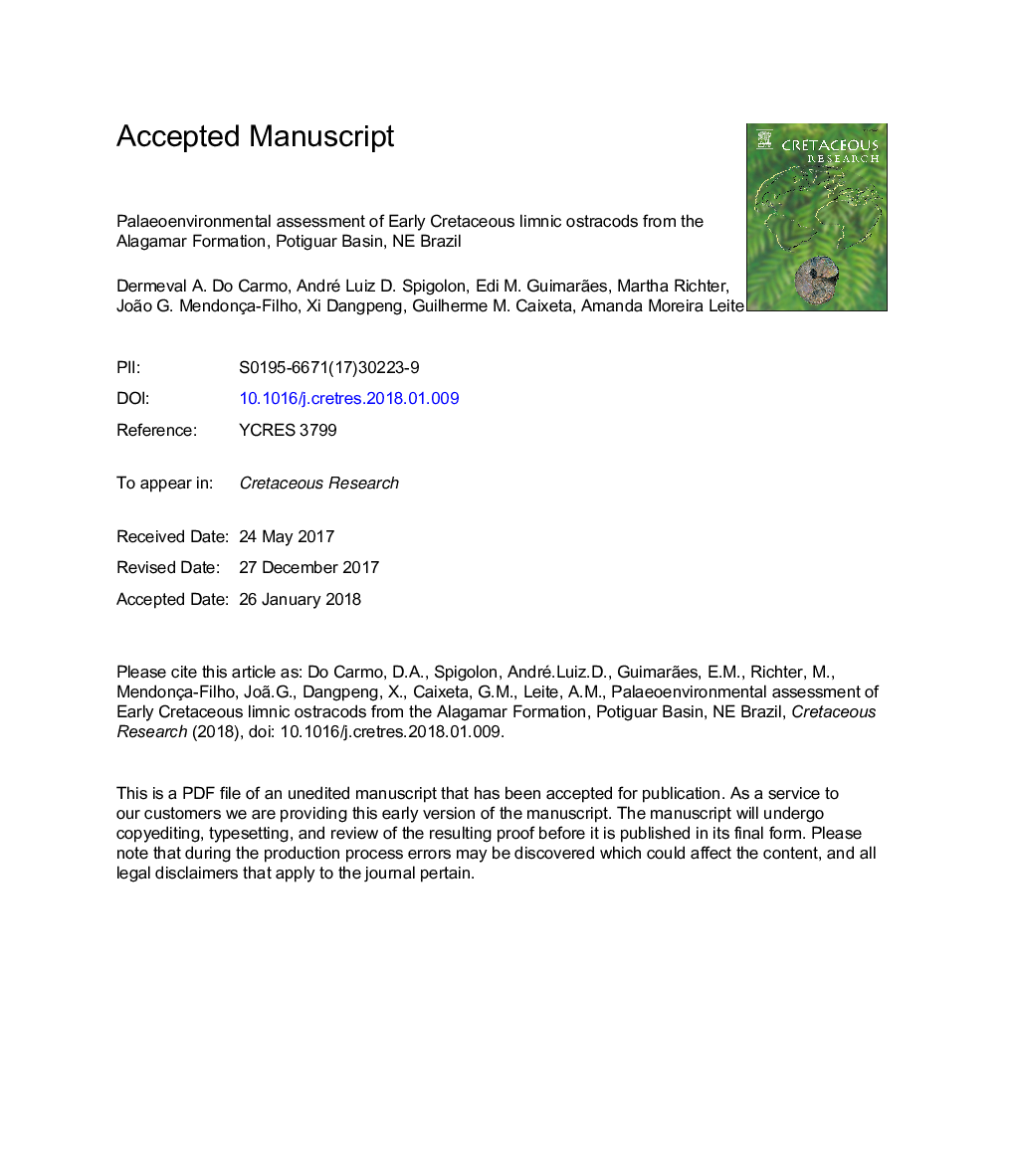| Article ID | Journal | Published Year | Pages | File Type |
|---|---|---|---|---|
| 8916348 | Cretaceous Research | 2018 | 54 Pages |
Abstract
Source rocks from the Alagamar Formation were analysed and fifteen non-marine ostracod species and one foraminifer species were identified. Thecamoebians, gastropods, fish teeth and incertae sedis material also occurred. Among these fossils, an agglutinated foraminifer, Gaudryinella sp. aff. G. sherlocki, and occurrences of foraminiferal organic linings, indicate deposition under transitional marine (paralic) influence. Harbinia crepata is considered holoeuryhaline, Paracypria? elongata brackish stenohaline and the other ostracods are freshwater euryhaline. Limnocytheridae ostracods together with foraminifers occurred in intercalated beds, and this pattern of changes in associations is herein interpreted as a record of temporal changes, characteristic of transitional palaeoenvironments. Previous studies on biomarkers and some articles dealing with palynomorphs also suggest that at least part of this unit was deposited in lagoonal conditions.
Related Topics
Physical Sciences and Engineering
Earth and Planetary Sciences
Palaeontology
Authors
Dermeval A. Do Carmo, André Luiz D. Spigolon, Edi M. Guimarães, Martha Richter, João G. Mendonça-Filho, Xi Dangpeng, Guilherme M. Caixeta, Amanda Moreira Leite,
